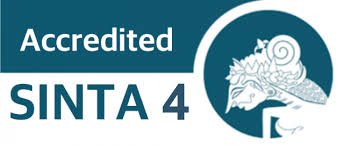ANALISIS KEMAMPUAN BERPIKIR ALJABAR MELALUI DESAIN KESEMPATAN BELAJAR MAHASISWA JURUSAN MATEMATIKA
https://doi.org/10.30605/pedagogy.v10i3.6962
Keywords:
kemampuan berpikir aljabar, desain kesempatan belajar, aljabar linearAbstract
Penelitian ini bertujuan untuk menganalisis kemampuan berpikir aljabar mahasiswa jurusan matematika melalui desain kesempatan belajar pada mata kuliah Aljabar Linear Elementer. Pendekatan penelitian yang digunakan adalah kualitatif deskriptif dengan subjek tiga orang mahasiswa yang dipilih secara purposif. Data dikumpulkan melalui analisis hasil tugas dan wawancara semi-terstruktur, kemudian dianalisis menggunakan indikator kemampuan berpikir aljabar menurut Kieran (2004), yaitu generalisasi aritmetika, representasi simbolik, dan penalaran struktur matematis. Hasil penelitian menunjukkan bahwa subjek pertama dan kedua memiliki kemampuan berpikir aljabar pada kategori sedang, sedangkan subjek ketiga menunjukkan kemampuan tinggi dengan eksplorasi konseptual yang lebih mendalam. Secara umum, mahasiswa lebih menguasai aspek generalisasi aritmetika dan representasi simbolik dibanding penalaran struktur matematis yang masih menjadi tantangan utama. Implementasi desain pembelajaran berbasis kesempatan belajar terbukti memberikan kontribusi positif dalam mengembangkan kemampuan berpikir aljabar mahasiswa melalui penciptaan lintasan konseptual yang bermakna, fleksibilitas pembelajaran, integrasi teknologi spreadsheet, serta pengembangan refleksi dan metakognisi. Temuan ini menegaskan pentingnya strategi pembelajaran yang responsif dan adaptif untuk mengoptimalkan perkembangan kemampuan berpikir aljabar mahasiswa di perguruan tinggi.
Downloads
References
Andini, W. (2024). Pengembangan desain didaktis untuk mengantisipasi learning obstacles berpikir aljabar di sekolah dasar. AL-TARBIYAH: Jurnal Pendidikan.
Hamda. Waliyullah, Akbar. Nasrullah. (2025). Analisis Kemampuan Penalaran Matematis Siswa SMP dalam Menyelesaikan Masalah Literasi Numerasi ditinjau dari Gaya Belajar. VENN: Journal of Sustainable Innovation on Education, Mathematics and Natural Sciences, 4(3), 183-195.
Kieran, C. (2004). Algebraic thinking in the early grades: What is it? The Mathematics Educator, 8(1), 139–151.
Kilpatrick, J., Swafford, J., & Findell, B. (Eds.). (2001). Adding it up: Helping children learn mathematics. National Academy Press.
Maria, M., Panggabean, E. M., & Harahap, T. H. (2023). Lintasan belajar berbasis lintasan konseptual pada bilangan bulat. Jurnal Inovasi Pembelajaran dan Pendidikan Islam, 4(2), 45–56.
Nasrullah. Khadijah. Liani, Ahyani Mirah (2024). Analisis kemajuan kemampuan dasar dalam pembelajaran aljabar linear lanjut bagi mahasiswa perguruan tinggi. Equals: Jurnal Ilmiah Pendidikan Matematika. 7 (2). 119-129. DOI: https://doi.org/10.46918/equals.v7i2.2512
National Council of Teachers of Mathematics. (2000). Principles and standards for school mathematics. NCTM.
Radford, L. (2010). Algebraic thinking from a cultural semiotic perspective. Research in Mathematics Education, 12(1), 1–19. https://doi.org/10.1080/14794800903569743 DOI: https://doi.org/10.1080/14794800903569741
Risnanosanti, R., Prasetyo, A. A., & Syofiana, M. (2023). Hypothetical learning trajectory penalaran matematis materi statistika. Indiktika: Jurnal Inovasi Pendidikan Matematika, 10(2), 113–128. DOI: https://doi.org/10.31851/indiktika.v5i2.11743
Simon, M. A. (1995). Reconstructing mathematics pedagogy from a constructivist perspective. Journal for Research in Mathematics Education, 26(2), 114–145. DOI: https://doi.org/10.5951/jresematheduc.26.2.0114
Stacey, K., & MacGregor, M. (1997). Ideas about symbolism that students bring to algebra. The Mathematics Teacher, 90(2), 110–113. DOI: https://doi.org/10.5951/MT.90.2.0110
Downloads
Published
How to Cite
Issue
Section
License
Copyright (c) 2025 Pedagogy : Jurnal Pendidikan Matematika

This work is licensed under a Creative Commons Attribution 4.0 International License.
In submitting the manuscript to the journal, the authors certify that:
- They are authorized by their co-authors to enter into these arrangements.
- The work described has not been formally published before, except in the form of an abstract or as part of a published lecture, review, thesis, or overlay journal.
- That it is not under consideration for publication elsewhere,
- That its publication has been approved by all the author(s) and by the responsible authorities – tacitly or explicitly – of the institutes where the work has been carried out.
- They secure the right to reproduce any material that has already been published or copyrighted elsewhere.
- They agree to the following license and copyright agreement.
License and Copyright Agreement
Authors who publish with this journal agree to the following terms:
- Authors retain copyright and grant the journal right of first publication with the work simultaneously licensed under Creative Commons Attribution License (CC BY 4.0) that allows others to share the work with an acknowledgment of the work's authorship and initial publication in this journal.
- Authors are able to enter into separate, additional contractual arrangements for the non-exclusive distribution of the journal's published version of the work (e.g., post it to an institutional repository or publish it in a book), with an acknowledgment of its initial publication in this journal.
- Authors are permitted and encouraged to post their work online (e.g., in institutional repositories or on their website) prior to and during the submission process, as it can lead to productive exchanges, as well as earlier and greater citation of published work.















